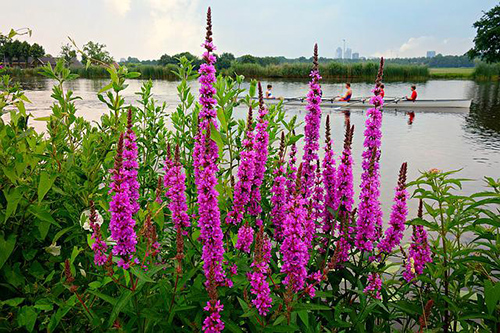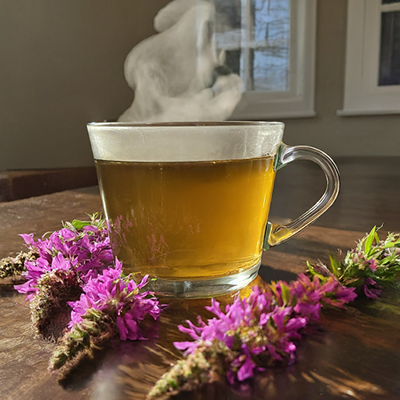Contents
Dioscorides recommended the purple loosestrife plant in the 1st century A.D. as an antidiarrheic and hemostatic substance. It is still used that way, and since Dioscorides’ time, it has helped heal many ill people, both children and adults. Due to its content, it has also been used for tanning skins.

Purple Loosestrife Scientific Facts
- Scientific Name – Lythrum salicaria L.
- Other Names – Long purples, mint willow-herb, loosestrife, purple willow-herb, willow sage.
- French – Salicaire.
- Spanish – Salicaria.
- Purple loosestrife habitat – Common in wet meadows and brook banks all over Europe. Naturalized to America.
- How to identify purple loosestrife: This vigorous plant of the Lauraceae family has upright, quadrangular, strong stems that grow up to 1.5 m high. It has willow-like leaves and purple-pink flowers that grow in spikes.
- Parts of the plant used medicinally – The flower clusters.
Healing Properties

The purple loosestrife plant contains up to 15 percent of tannin. It owes its astringent and antidiarrheic properties, pectin and mucilage, which give it emollient (inflamed skin and mucosa soothing) properties, and flavonoids and anthocyanines with anti-inflammatory properties. Its indications are as follows:

- Diarrhea, gastroenteritis, dysentery, colitis – It is advantageous when severe bleeding or mucus emission occurs. It has been successfully used for salmonellosis and typhoid fever. Loosestrife is appropriate for fighting diarrhea in children still on a milk diet, both in enema and bottle feeding, and is associated with a good diet regime (carrots, boiled white rice, carob flour, etc.)
- Varicose ulceration, infected wounds, eczema, and dermatosis have a notable regenerative and healing effect on the epidermis.
- Vaginitis, leukorrhea, and metrorrhagia (uterine bleeding not related to menstruation) after medical control. It is applied in the form of vaginal irrigation.
How to use Purple Loosestrife
- Infusion with 40 to 60 grams of flower clusters per liter of water. Drink from three to eight cups daily.
- Lotions and compresses with a decoction of 100 to 150 grams per liter.
- Vaginal washings and irrigations with the decoction mentioned above.
DISCLAIMER: All content on this website is presented solely for educational and informational objectives. Do not rely on the information provided as a replacement for advice, diagnosis, or treatment from a qualified medical expert. If you are pregnant, nursing, or have any preexisting medical concerns, talk to your doctor before using any herbal or natural medicines.
REFERENCES
- George D. Pamplona-Roger, M.D. “Encyclopedia of Medicinal Plants.” George D. Pamplona-Roger, M.D. Encyclopedia of Medicinal Plants. Ed. Francesc X. Gelabert. vols. 2 San Fernando de Henares: Editorial Safeliz, 2000. 510. Print.
- PubMed: https://pubmed.ncbi.nlm.nih.gov/
- Google Scholar: https://scholar.google.com/
- National Center for Complementary and Integrative Health (NCCIH): https://nccih.nih.gov/
